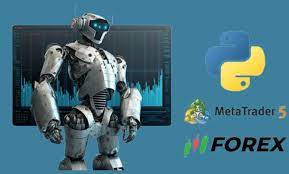In the ever-evolving landscape of financial markets, technology continues to play a pivotal role in shaping trading strategies and methodologies. Among the myriad of advancements, one innovation that stands out is the emergence of forex robot, also known as expert advisors (EAs). These automated systems have revolutionized the way traders approach the foreign exchange (Forex) market, offering a blend of efficiency, precision, and convenience. Let’s delve into the fascinating world of Forex robots and explore how they are transforming currency trading.
Understanding Forex Robots
Forex robots are computer programs designed to execute trading decisions on behalf of traders. These algorithms are programmed with predefined parameters and trading rules, allowing them to analyze market conditions, identify trading opportunities, and execute trades automatically. Utilizing complex mathematical models and algorithms, these robots aim to capitalize on price movements in the Forex market with speed and accuracy.
Key Features and Benefits
- 24/7 Trading: One of the most significant advantages of Forex robots is their ability to operate round the clock. Unlike human traders, these automated systems can monitor the market continuously, seizing opportunities and executing trades even in the absence of human intervention. This feature ensures that potential trading opportunities are not missed, especially in a market known for its volatility and rapid price changes.
- Emotion-Free Trading: Emotions such as fear, greed, and hesitation can often cloud the judgment of human traders, leading to irrational decisions and poor outcomes. Forex robots eliminate this emotional aspect from trading by strictly adhering to predefined rules and parameters. This disciplined approach helps in maintaining consistency and preventing impulsive trading decisions, thereby improving overall performance.
- Backtesting and Optimization: Before deploying a Forex robot in live trading, traders have the option to backtest their algorithms using historical data. This process involves running the algorithm against past market conditions to assess its performance and profitability. Additionally, traders can optimize their robots by tweaking parameters and fine-tuning strategies to achieve better results. This iterative process allows for continuous improvement and refinement of trading algorithms.
- Diversification and Risk Management: Forex robots offer traders the flexibility to diversify their trading portfolios across multiple currency pairs and strategies simultaneously. By spreading risk across different assets and approaches, traders can mitigate the impact of adverse market movements on their overall portfolio. Moreover, these automated systems can incorporate risk management techniques such as stop-loss orders and position sizing to protect capital and minimize losses.
Challenges and Considerations
While Forex robots offer numerous benefits, it’s essential to acknowledge the challenges and considerations associated with their usage:
- Over-Optimization: Excessive optimization of trading algorithms based on historical data can lead to overfitting, where the algorithm performs exceptionally well on past data but fails to generalize to new market conditions. Traders must strike a balance between optimizing their robots for historical performance and ensuring robustness in real-time trading.
- Market Volatility and Black Swan Events: Despite their sophistication, Forex robots are not immune to market volatility and unexpected events. Sudden price movements, geopolitical turmoil, or economic crises can disrupt trading algorithms and lead to significant losses. Traders should implement risk management protocols and monitor their robots closely, especially during periods of heightened volatility.
- Technical Issues and System Failures: Like any software-based system, Forex robots are susceptible to technical glitches, connectivity issues, and system failures. A loss of internet connection or malfunctioning hardware/software can disrupt automated trading operations, potentially resulting in missed opportunities or unintended trades. Traders should have contingency plans in place to address such scenarios and ensure the reliability of their trading infrastructure.
The Future of Forex Trading
As technology continues to advance, the landscape of Forex trading will undoubtedly evolve further. The integration of artificial intelligence (AI), machine learning, and big data analytics promises to enhance the capabilities of Forex robots, enabling them to adapt to dynamic market conditions with greater agility and precision. Additionally, advancements in algorithmic trading platforms and cloud-based solutions are making automated trading more accessible to retail traders, democratizing access to sophisticated trading tools and strategies.
In conclusion, Forex robots represent a paradigm shift in the way currency trading is conducted, offering a potent combination of automation, efficiency, and scalability. While they are not without their challenges, the benefits they offer in terms of convenience, risk management, and performance improvement are undeniable. As traders embrace these technological innovations, the future of Forex trading looks increasingly automated and algorithmically driven, ushering in a new era of efficiency and opportunity in the global currency markets.
